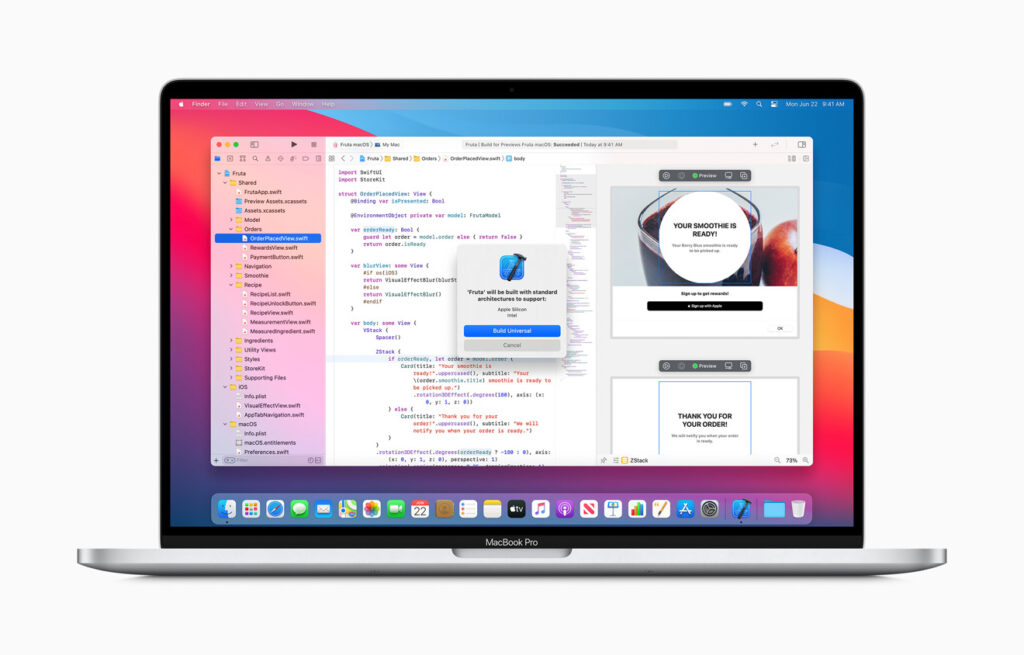
Before this year ends and the decade of the 2020s gets underway, Apple is poised to unveil a dramatic new architecture for its venerable Macintosh computing platform. Here’s why new Apple Silicon hardware is an important step in the future of the Mac.
Why Apple is moving to new silicon
Across the last four decades, Apple has uniquely made a series of radical moves to shift its Mac hardware to entirely new and materially different chip architectures.
No other computing platform has successfully performed such a complex undertaking on a similar scale even once, let alone attempting the three major platform shifts Apple has made on the Mac, from Motorola’s 68000 in the 1980s to PowerPC in the 90s and then to Intel x86 in the 2000s.
Each migration involved massive efforts to not only deliver new hardware, but also transform vast software platforms and create new development tools to minimize the transition pain of users and developers. When Apple migrated to PowerPC in the early 90s, other platforms of the day were supposed to complete parallel transitions of their own, including Microsoft’s Windows NT, IBM’s OS/2, the Commodore Amiga, and many others.
Apple’s unique ability to successfully complete the shift to PowerPC was complicated by other firms’ failing to do the same, resulting in Apple eventually ending up the only major PowerPC user. The difficulty of that transition and its unexpected result might suggest that in hindsight, it was ultimately a mistake to have attempted such a complex and risky task.
On the other hand, Apple’s migration to Intel Macs about a decade later was hailed as a masterful strategic move, enabling Apple to enter new markets and eventually expand its Mac platform dramatically. Yet Apple’s move to Intel’s chips starting in 2006 was largely enabled by the company’s previous PowerPC experience in learning how to execute such a transition.
An Apple Silicon transition that’s been underway for a decade
It’s useful to examine what benefit there is for Apple to again shift to an all-new chip architecture this year, this time using a custom silicon architecture of its own design rather than buying off-the-shelf chips available to any PC maker.
In a variety of ways, the Mac-maker’s move to new “Apple Silicon” isn’t entirely new. The company has been developing customized “System on a Chip” silicon since 2008, an effort which resulted in the A4 chip that powered iPhone 4, the original iPad, and the first iOS-based Apple TV.
Starting in 2016, Apple began shipping Macs equipped with T1, a custom SoC designed to handle Touch ID security and to provide the System Management Controller features that differentiated Apple’s Intel Macs from commodity Intel PCs. Even before the T1, Apple’s custom SMC microcontroller managed Macs’ power management, battery charging, sleep and hibernation, video display modes, and other features that customized and enhanced the Mac experience.
Since 2017, new Macs have included an even more advanced T2 SoC. This 64-bit chip handles everything from disk encryption to image processing, and enabled features ranging from iPad Sidecar to Hey Siri. The last few years of T2 Macs have effectively been Apple Silicon Macs with an Intel processor providing native x86 software compatibility!
How Macs got hooked on Intel chips
Apple’s Intel Macs currently use the same Intel x86 architecture as industry-standard PCs running Windows or Linux. In fact, the Intel chips in today’s Macs are inherently what made it so easy for Macs to run Windows software or run an instance of a Linux server.
That commonality and compatibility were originally touted as a major reason for Apple moving to Intel chips back in 2006.
Before that shift, Apple’s Macs used PowerPC chips that could boast a number of technical advantages over x86 chips. However, PowerPC increasingly struggled to keep up with the pace of Intel’s competitive x86 developments simply due to economic factors.
By 2004, Apple was the only significant vendor left using PowerPC chips. The rest of the desktop computing world had largely converged on x86 chips from Intel, creating vast economies of scale that supported Intel’s continued investment in future generations of its x86 chips.
